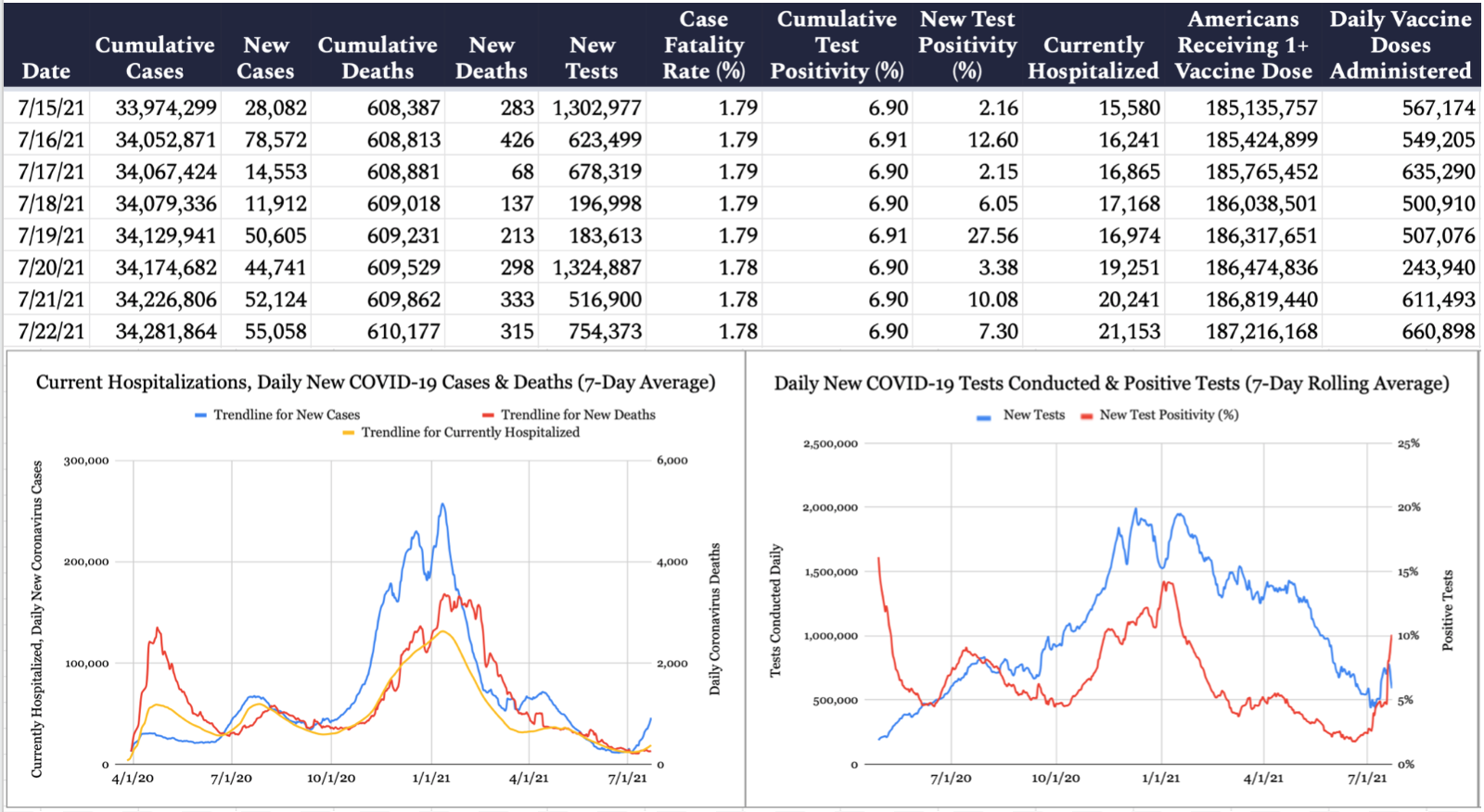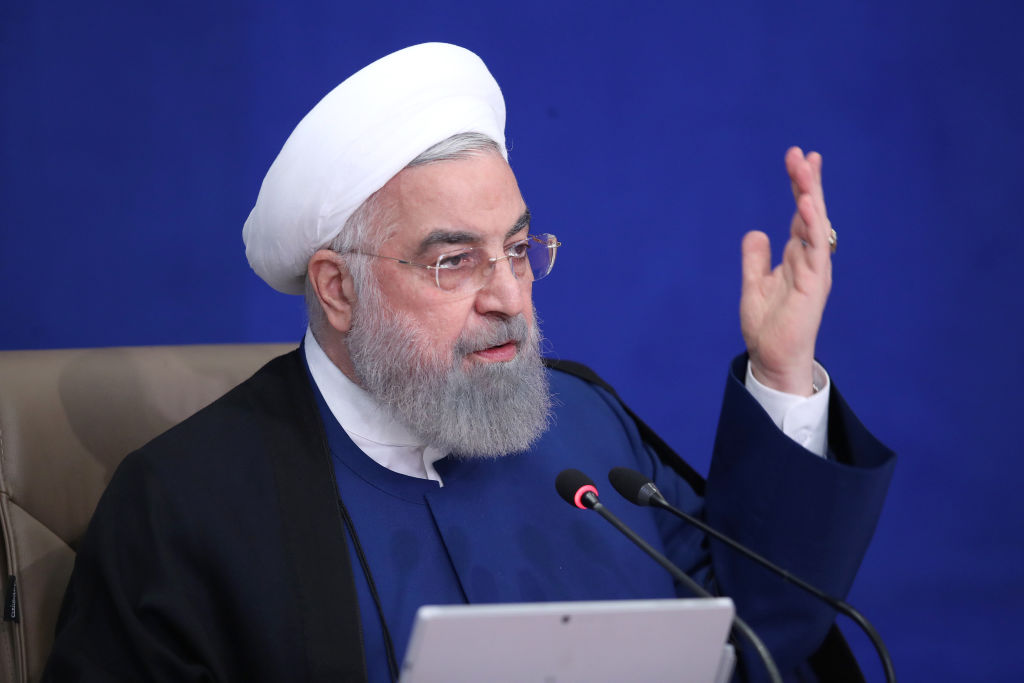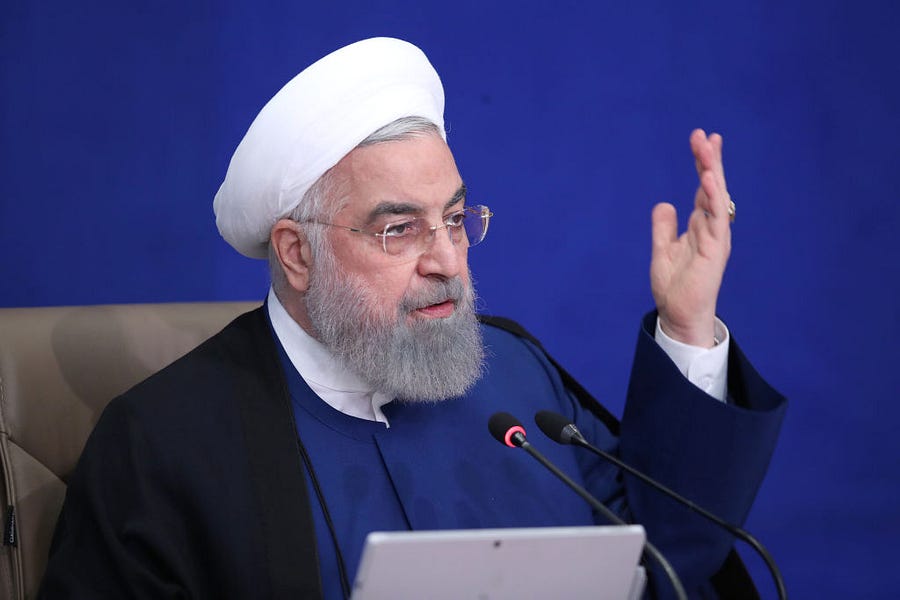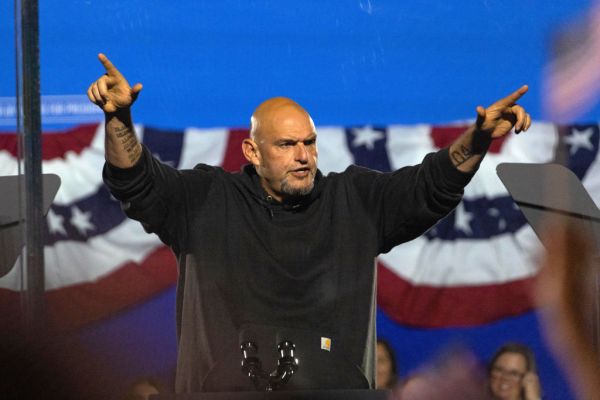Happy Friday! It seems we forgot to knock on wood when we announced there was no longer a need for our daily COVID charts. With the Delta variant raging, we’ve decided to resurrect the TMD COVID-19 data on a limited basis, providing an update once or twice a week.
We hope you’re so ecstatic about this news that you forget to ask us how softball went last night.
Quick Hits: Today’s Top Stories
-
The Biden administration on Thursday announced sanctions on Cuban Minister of Defense Alvaro Lopez Miera and the Cuban Ministry of the Interior’s Special National Brigade for their respective roles in “facilitating the repression of peaceful, pro-democratic protests in Cuba that began on July 11.” Biden, in a statement, vowed to work with partners in the region to pressure the Cuban regime to release political prisoners, restore internet access, and guarantee Cuban citizens fundamental rights.
-
By a vote of 407-16, the House yesterday moved to expand a visa program for Afghans who have aided U.S. forces throughout the war in Afghanistan. The number of special immigrant visa passes available will nearly double from 11,000 to 19,000 if the legislation is passed in the Senate, and visa applicants will no longer have to prove they face a specific threat from the Taliban to earn a visa. Surviving spouses and children would also retain eligibility even if the applicant dies before their visa is approved.
-
The Labor Department announced that the number of Americans seeking unemployment benefits rose to 419,000 from 368,000 the previous week, even as the nationwide job market continued to improve.
-
The National Football League on Thursday sent a memo to all 32 teams outlining a new policy that threatens forfeits and the loss of game checks if an outbreak among unvaccinated players forces the cancellation of a game. The NFL is not mandating vaccines for its players, but the policy is the latest in a series of vaccine incentives set up by the league.
-
The United States confirmed 55,058 new cases of COVID-19 yesterday per the Johns Hopkins University COVID-19 Dashboard, with 7.3 percent of the 754,373 tests reported coming back positive. An additional 315 deaths were attributed to the virus on Thursday, bringing the pandemic’s American death toll to 610,177. According to the Centers for Disease Control, 21,153 Americans are currently hospitalized with COVID-19. Meanwhile, 660,898 COVID-19 vaccine doses were administered yesterday, with 187,216,168 Americans having now received at least one dose.

Iranians Protest Water Shortages

The Iranian government is facing calls for regime change once again amid protests that began with water shortages in the country’s southwest Khuzestan province last week. Demonstrators have taken to the streets for eight consecutive days, with many chanting anti-government rallying cries like “death to the dictator” and “down with the Islamic Republic.” That’s despite threats of arbitrary detainment, beatings, tear gas, and gunfire by Iran’s increasingly hostile security forces.
At least three people have been killed in the unrest, according to human rights groups and Iranian state media. Per the latter, a police officer was among those killed, but deliberate obfuscation of casualties has been used by Iranian authorities in the past to place blame for violence on protesters.
Other government officials have been amenable to Khuzestan’s grievances regarding record high temperatures and severe drought, but are reluctant to acknowledge protesters calling for regime change.
“People who are living in 50 degrees Celsius with water shortage problems have a natural right to speak out and protest, even to take to the streets,” outgoing President Hassan Rouhani said on state television. Rouhani also reportedly urged the governor general of Khuzestan province, Qassem Soleimani Dashtaki, “to take immediate action to resolve problems” pertaining to the drought.
But even as the Iranian government lends protesters a sympathetic ear, its security forces have mobilized anti-riot vehicles and units to Khuzestan to dissuade gatherings. The regime’s fear, experts speculate, is the metastasis of the mostly localized demonstrations into a broader anti-government movement across the country.
“The Iranian people are continuing to use every crisis that comes their way, whether economic, social, or even environmental, to signal their political dissatisfaction with the regime in Tehran,” Behnam Ben Taleblu, a senior fellow at the Foundation for Defense of Democracies, told The Dispatch. “Just as chants went from ‘where is my vote’ to ‘death to the dictator’ in the past, these protests triggered by the water crisis are now targeting the very nature and leadership of the regime, as seen in their slogans which transgress rhetorical redlines.”
Government-imposed mobile internet outages were deployed the day protests began, “likely to limit the public’s ability to express political discontent or communicate with each other and the outside world,” NetBlocks reported Wednesday. Authorities used a similar tactic during the November 2019 protests, during which more than 1,500 Iranians were killed. Given the upcoming ascent of hardliner Ebrahim Raisi to the presidency, onlookers fear a similar government crackdown if demonstrations persist.
Unrest has reportedly cropped up in cities and towns outside of Khuzestan, including the capital city of Tehran and Mashhad. Hundreds of commuters at a Tehran metro station staged an impromptu protest Tuesday following confusion regarding the train schedule as the city reenters lockdown. Iran, one of the few countries developing its own COVID-19 vaccine, is in the midst of another wave of the virus and reported a record 27,444 new cases and 250 deaths on Tuesday.
“We are closely following reports of protests in Iran’s Khuzestan province, including reports that security forces have fired on these protesters. We support the rights of Iranians to peacefully assemble and to express themselves,” State Department spokesman Ned Price said when asked by reporters about the regime’s crackdown. “Iranians, just like any other people, should enjoy those rights without fear of violence, without fear of arbitrary detention by security forces. And so we’re monitoring this very closely.”
Overall, however, the Biden administration and international community’s response has been largely muted.
“The Khuzestan protests raise two important questions for the Biden administration,” Ben Taleblu said. “First, is this the sort of regime that deserves a cash bailout and a patient pathway to a nuclear weapon? The Iranian people consistently have said no.”
“Second, is there no redline that Iran can transgress that would make the U.S. walk away from the negotiating table?” he added. “To date, the Islamic Republic has fired rockets and drones at U.S. positions in Iraq, tried to kidnap an American citizen on U.S. soil, escalated their nuclear program significantly to not only breach the JCPOA but the Additional Protocol and even the Non-Proliferation Treaty, and are now violently suppressing peaceful protests.”
Redistricting Process is In Pandemic Limbo
Congressional redistricting is usually a routine process. Every 10 years, apportionment data from the census comes out at the end of the calendar year, detailed demographic data for the purpose of redrawing congressional district maps is released by April 1, and states use this data to tweak their existing district boundaries before the filing deadlines for the next midterm elections.
This year, that mad dash has been beset by pandemic-induced delays. In an exception to the statutory deadline, the demographic data for redistricting won’t come out until August 16.
“It’s put everyone in sort of a state of limbo,” elections analyst J. Miles Coleman, associate editor of Sabato’s Crystal Ball, told The Dispatch. By this time in 2011, several states had published drafts of their new maps. Now, “in a lot of districts across the country, you have congressional candidates who are running, but they don’t know what district they’re going to run in.”
“I would expect [that] hopefully most states have more or less settled on a plan by Thanksgiving,” Coleman said. But the process could easily drag into the spring in certain states, especially those with more districts and later primaries.
In most states, legislatures control the process—and since most state legislatures are under the unified control of one party, that can lead to gerrymandered districts designed to unfairly benefit one party over the other.
Gerrymandering is broadly unpopular. A recent Tyson Group survey found that 57 percent of likely Republican voters favor map-drawing by independent commissions. Among liberals, that position is so deeply ingrained that voters in blue states like Virginia have voluntarily handed such commissions power over the redistricting process. Anti-gerrymandering provisions are central to H.R. 1, Democrats’ sweeping election reform package that would institute a myriad of federal restrictions on the electoral process nationwide.
Even detached from H.R.1, ending gerrymandering “is not going to be the silver bullet for the Democrats,” Coleman said—and not just because they benefit from the practice in blue states like Illinois. Even with more favorable maps, Democrats’ asymmetric concentration in urban areas in states like Wisconsin makes it inherently difficult for them to capture state legislatures there. Still, the Supreme Court’s 2019 decision to not involve the federal judiciary in partisan gerrymandering disputes has helped create a “Wild West” situation around the issue.
Recognizing unfair maps is one thing; actually drawing fair ones is another. And “fair” can mean a lot of things. Should maps be drawn to generate outcomes roughly proportional to the political makeup of states? How about the competitiveness of the general election races in each district? What about geographical compactness, or the representation of minorities and other “communities of interest”? These are all different ways of defining “fair,” and there are real tradeoffs between them.
One thing is certain: As the parties seek control of a narrowly divided House in next year’s midterms, the states’ redistricting plans are sure to receive a lot of attention.
“Overall, the Democrats are probably in a better position now than they were in 2010,” Coleman said, noting that several larger states—Pennsylvania, Wisconsin, Michigan—now have either split governments or, in Michigan’s case, a new independent commission. “So Democrats may be able to get more fair maps out of those states.”
Worth Your Time
-
Longtime Boston journalist Jack Thomas recently learned he has inoperable cancer, which his doctors say will kill him within months. In the Boston Globe, he wrote a remarkable reflection on his life in response. “Does the intensity of a fatal illness clarify anything?” he asks. “Every day, I look at my wife’s beautiful face more admiringly, and in the garden, I do stare at the long row of blue hydrangeas with more appreciation than before. And the hundreds and hundreds of roses that bloomed this year were a greater joy than usual, not merely in their massive sprays of color, but also in their deep green foliage, the soft petals, the deep colors and the aromas that remind me of boyhood.”
-
For Axios, Lachlan Markay dug into the symbiotic relationship between partisan news outlets and political campaigns. “Ideologically driven news outlets are providing a steady stream of funding for like-minded political candidates by harvesting readers’ emails and charging campaigns to fundraise from them,” he writes. “The news sites bombard readers with content attacking political adversaries, and the candidates then step in with a solution: give me money and I’ll stop them. The financial incentives for both the news sites and their email advertisers are obvious. But the arrangement also encourages each party to rile up readers with more divisive content. That keeps eyeballs on the news sites and builds a politically enthusiastic readership more valuable to potential political advertisers.”
Presented Without Comment
Also Presented Without Comment
Toeing the Company Line
-
Thomas Joscelyn’s latest Vital Interests(🔒) revisits a 2015 agreement between Xi Jinping and then-President Barack Obama that promised neither country’s government would support cyber-enabled theft of intellectual property. “It’s clear now, if it wasn’t before, that Xi had no intention of honoring his commitment,” Joscelyn writes. “Nearly six years later, the Biden administration has been forced to confront a range of cybercrimes carried out under the auspices of Xi’s Chinese Communist Party.”
-
On Thursday’s Advisory Opinions, Sarah and David break down the recent Supreme Court term with Kannon Shanmugam, a Supreme Court litigant and a partner at Paul Weiss LLP. They ask Shanmugam what it’s been like arguing cases remotely, how much Justice Amy Coney Barrett has shaken up the court, and how the court’s judicial philosophy has evolved on issues like free speech and qualified immunity.
-
In his Thursday French Press(🔒), David ruminates on varying approaches to vaccine advocacy and how best to persuade those hesitant to get the shot. “The free speech advocate in me says that in the face of continuing, widespread resistance and confusion, the answer isn’t ‘censor more.’ It’s ‘say more,’” he writes. “It’s also ‘engage more,’ at the personal level. Don’t delegate your community’s health to the words and actions of government, corporate, or media power. Deep distrust is best dispelled personally, through relationships, words, and actions.”
-
Ransomware attacks have been on the rise, and the specter of state-backed criminal operations attacking private U.S. interests presents a thorny problem for Congress. Ryan talks to experts about just what lawmakers can do to help.
-
If Congress can ever agree on an infrastructure package, electric vehicles will benefit. The bipartisan framework includes $7.5 billion for more public charging stations. That may not sound like much, but it’s a sign that the market for EVs is developing.
Let Us Know
The opening ceremony for the Tokyo Olympics is tonight. Do you have a favorite Olympic sport or event? Is there an athlete you’d wake up in the middle of the night to watch compete live?
Reporting by Declan Garvey (@declanpgarvey), Andrew Egger (@EggerDC), Charlotte Lawson (@charlotteUVA), Ryan Brown (@RyanP_Brown), Harvest Prude (@HarvestPrude), Tripp Grebe (@tripper_grebe), Emma Rogers (@emw_96), Price St. Clair (@PriceStClair1), Jonathan Chew (@JonathanChew19), and Steve Hayes (@stephenfhayes).






Please note that we at The Dispatch hold ourselves, our work, and our commenters to a higher standard than other places on the internet. We welcome comments that foster genuine debate or discussion—including comments critical of us or our work—but responses that include ad hominem attacks on fellow Dispatch members or are intended to stoke fear and anger may be moderated.
You are currently using a limited time guest pass and do not have access to commenting. Consider subscribing to join the conversation.
With your membership, you only have the ability to comment on The Morning Dispatch articles. Consider upgrading to join the conversation everywhere.